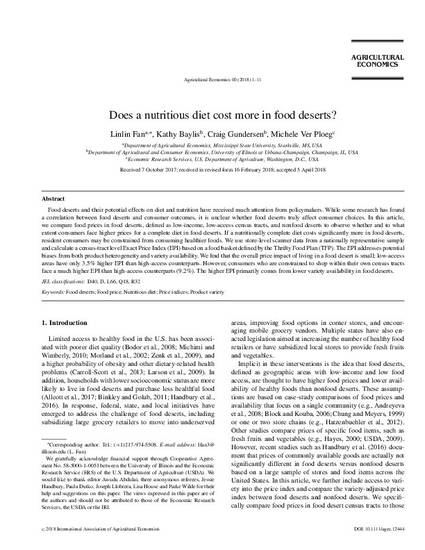
Article
Does a Nutritious Diet Cost More in Food Deserts?
Agricultural Economics
(2018)
Abstract
Food deserts and their potential effects on diet and nutrition have received much attention from policymakers. While some research has found a correlation between food deserts and consumer outcomes, it is unclear whether food deserts truly affect consumer choices. In this article, we compare food prices in food deserts, defined as low-income, low-access census tracts, and nonfood deserts to observe whether and to what extent consumers face higher prices for a complete diet in food deserts. If a nutritionally complete diet costs significantly more in food deserts, resident consumers may be constrained from consuming healthier foods. We use store-level scanner data from a nationally representative sample and calculate a census-tract level Exact Price Index (EPI) based on a food basket defined by the Thrifty Food Plan (TFP). The EPI addresses potential biases from both product heterogeneity and variety availability. We find that the overall price impact of living in a food desert is small; low-access areas have only 3.5% higher EPI than high-access counterparts. However, consumers who are constrained to shop within their own census tracts face a much higher EPI than high-access counterparts (9.2%). The higher EPI primarily comes from lower variety availability in food deserts.
Keywords
- Food deserts,
- food price,
- nutritious diet,
- price index,
- product variety
Disciplines
Publication Date
2018
DOI
https://doi.org/10.1111/agec.12444
Citation Information
Linlin Fan, Kathy Baylis, Craig Gundersen and Michelle ver Ploeg. "Does a Nutritious Diet Cost More in Food Deserts?" Agricultural Economics (2018) Available at: http://works.bepress.com/kathy_baylis/86/
